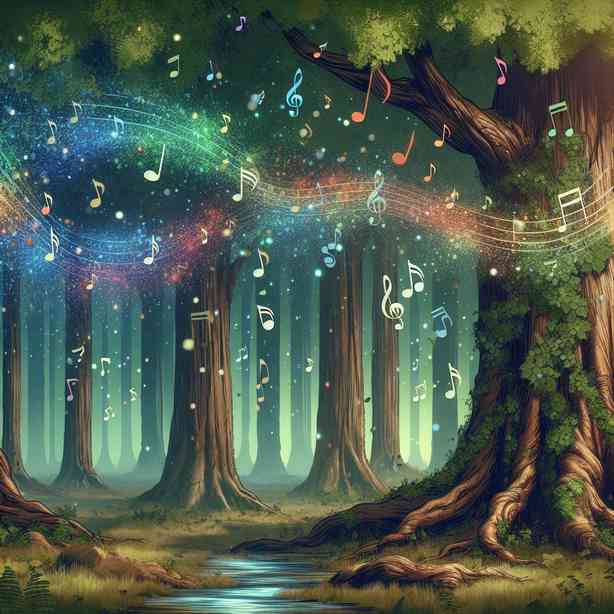
Music that evokes the sensation of breathing has always captivated listeners, often transcending mere auditory experiences to evoke strong emotional responses. This phenomenon is deeply rooted in the human experience, entwined with our biological rhythms and resonant with the natural world. In exploring the intricacies of music that sounds like it is breathing, we can uncover the relationship between sound, emotion, and the essence of life itself.
The notion of music breathing may initially stem from the rhythmic patterns inherent in many musical compositions. Just as we draw breath in a steady and often unconscious manner, certain musical pieces orchestrate a sense of flow that mirrors this biological function. Composers often employ tempo shifts, dynamic swellings, and phrasing to create a sense of rise and fall, paralleling the inhalation and exhalation of breath. This rhythmic articulation can provide listeners with a deeply immersive experience, drawing them into a sonic landscape that feels alive.
A notable example of music that embodies this breathing quality can be found in ambient and minimalist music. Artists such as Brian Eno have made significant contributions to this genre by using slowly evolving soundscapes that mimic the natural rhythms of life. Eno’s “Music for Airports” features soft, pulsating tones that create an atmosphere conducive to reflection and serenity. This approach allows listeners to feel as if they are part of a larger whole, much like the ebb and flow of breath connects one to the vitality of existence.
In addition to ambient music, certain classical compositions exhibit this breathing quality in profound ways. The works of composers like Claude Debussy and Erik Satie often resonate with organic flow, employing delicate chords and melodic lines that rise and fall gracefully. Debussy’s “Clair de Lune,” for example, captures the essence of nature and emotion through its undulating phrases, evoking a tranquil breathing pattern that enchants listeners. The subtle changes in dynamics and phrasing add a layer of depth, inviting the audience to engage with the music on a deeply personal level.
The use of silence is another pivotal aspect in creating music that breathes. Composers often integrate pauses and rests to allow the listening experience to expand. John Cage’s avant-garde work “4’33″” highlights the significance of silence, inviting audiences to become aware of ambient sounds and their own breathing as they experience the absence of deliberate musical notes. This intentional silence can lead to moments of introspection, allowing listeners to reflect on their own relationship with sound and the act of being present.
Moreover, the incorporation of vocals in music can add another dimension to the breathing quality. When sung or spoken, the human voice naturally follows the rhythm of breath. Choral music, in particular, showcases this beautifully, as layers of harmonies weave together to create a tapestry of sound that breathes with the pulse of the performers. Compositions such as “Lux Aurumque” by Eric Whitacre exemplify this interplay of voice and breath, with lush harmonies that swell and recede like gentle waves.
Furthermore, electronic music has also embraced this concept, with producers utilizing synthesizers and sound manipulation techniques to craft auditory environments that resonate with the notion of breathing. Artists such as Aphex Twin and Tycho create rich, textured soundscapes that feel alive, pulsating in harmony with the listener’s own breath. The interplay of rhythm and melody in their compositions can evoke a profound sense of connection, as if the music itself is an extension of the listener’s own biological rhythms.
In exploring the psychological aspects of music that sounds like it is breathing, research has shown that our emotional responses to music are intricately tied to our physiological states. Studies indicate that music with smooth, flowing melodies can induce relaxation and reduce stress by mirroring the body’s natural rhythms. When we listen to music that resonates with our breathing patterns, our heart rates may synchronize with the tempo, fostering a state of calm and well-being.
Moreover, the cultural significance of music as a representation of breath cannot be overstated. In many traditions, music is interwoven with rituals and practices that revolve around the breath, such as meditation, yoga, and storytelling. For instance, in various Indigenous cultures, songs are performed with the intent of connecting individuals to the land and their ancestry, embodying the breath of the Earth itself. This highlights how music serves not only as a form of expression but also as a conduit through which we can connect with our surroundings and heritage.
As our exploration of this topic comes to a close, it becomes clear that the phenomenon of music that sounds like it is breathing encompasses a vast and intricate tapestry of emotions, cultures, and experiences. Whether through the lush harmonies of classical compositions, the ambient textures of electronic music, or the communal spirit of vocal performances, music continues to resonate with the essence of life itself. It serves as a reminder of the interconnectedness of all beings, capturing the profound simplicity and complexity of existence.
In summary, music that embodies the sensation of breathing offers a unique and enriching experience for listeners, resonating on both a physical and emotional level. It draws from a rich history that intertwines sound with the human experience, allowing us to connect with ourselves and the world around us. As you continue your musical journey, consider embracing compositions that evoke this breathing quality, inviting the music to resonate with your own breath and inspire a deeper connection to the rhythm of life.


